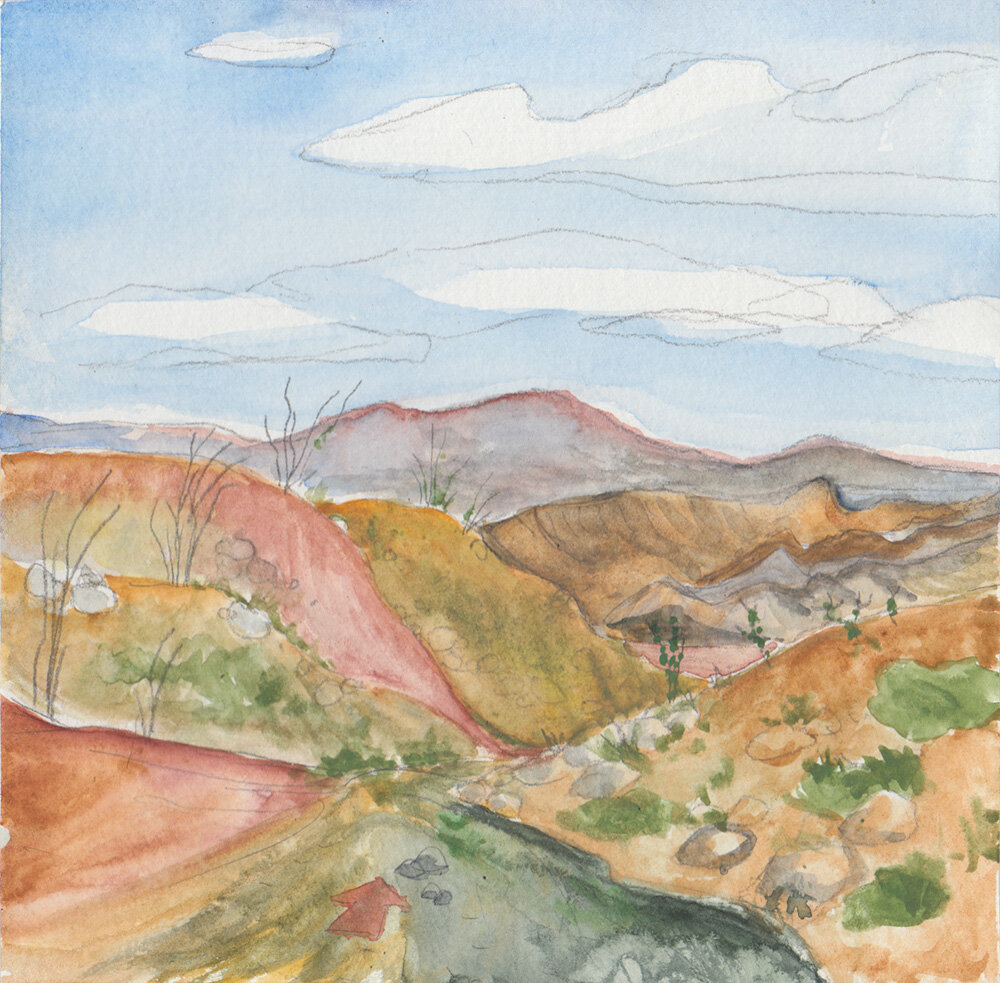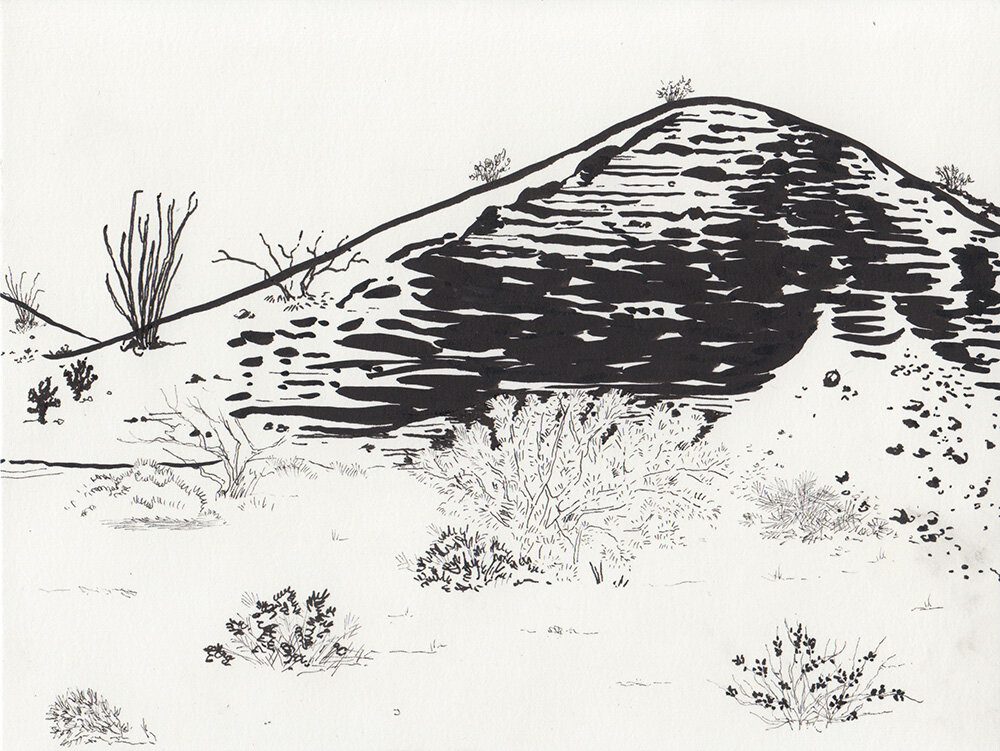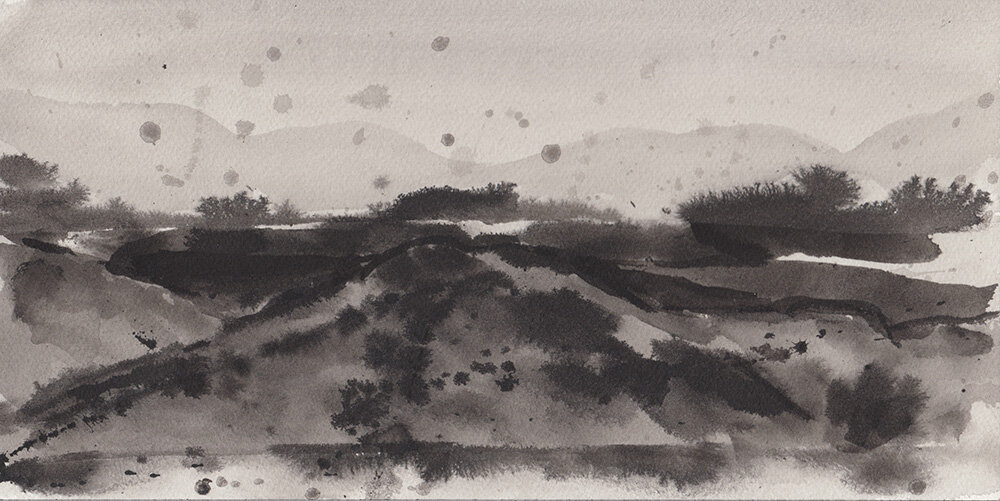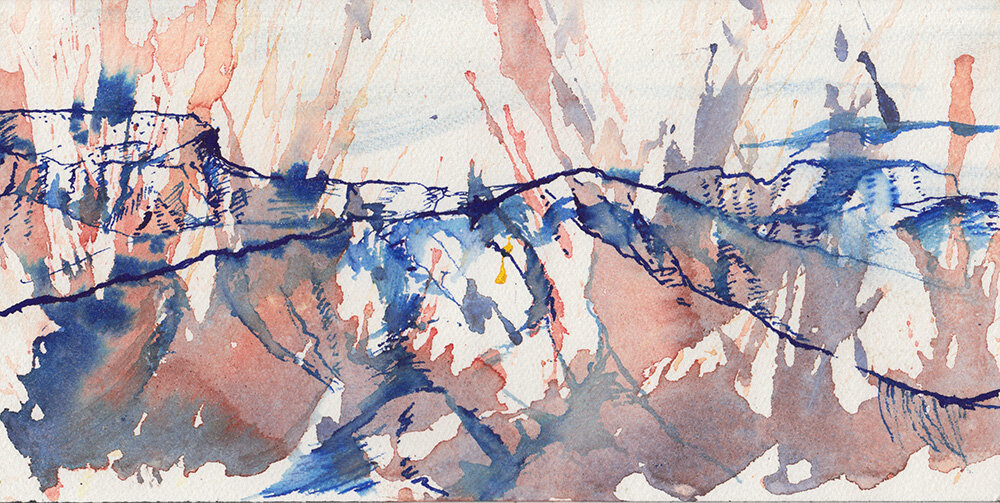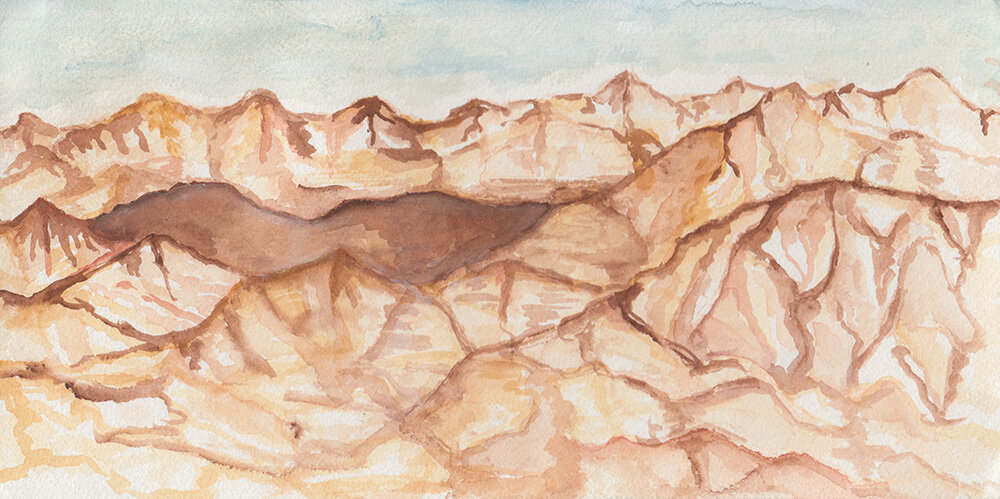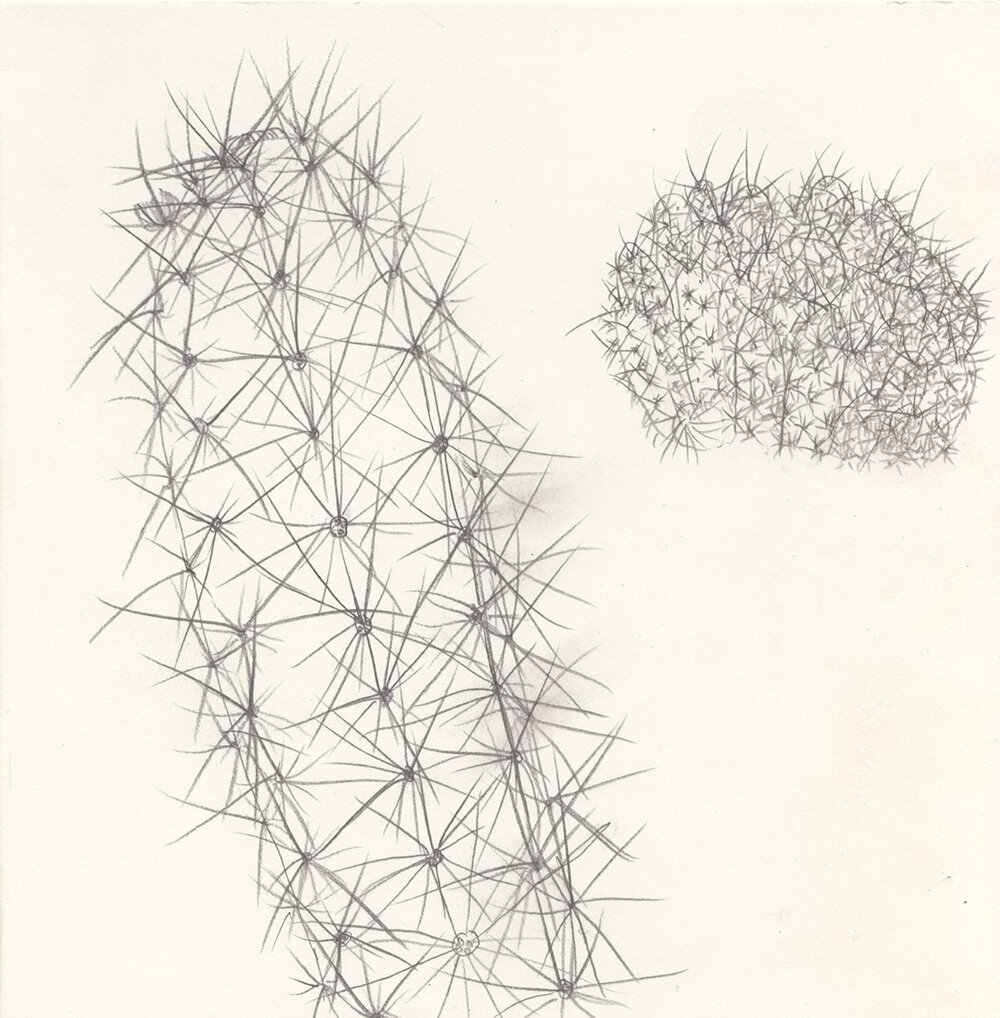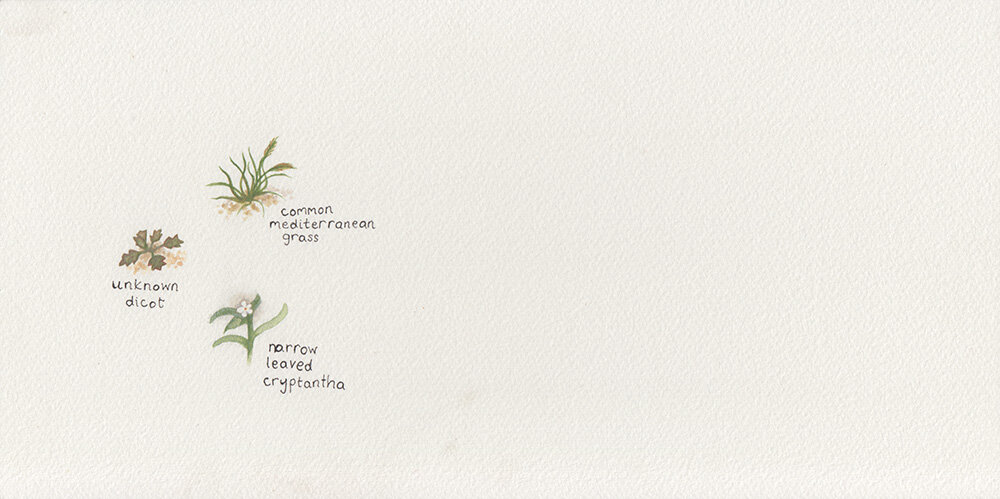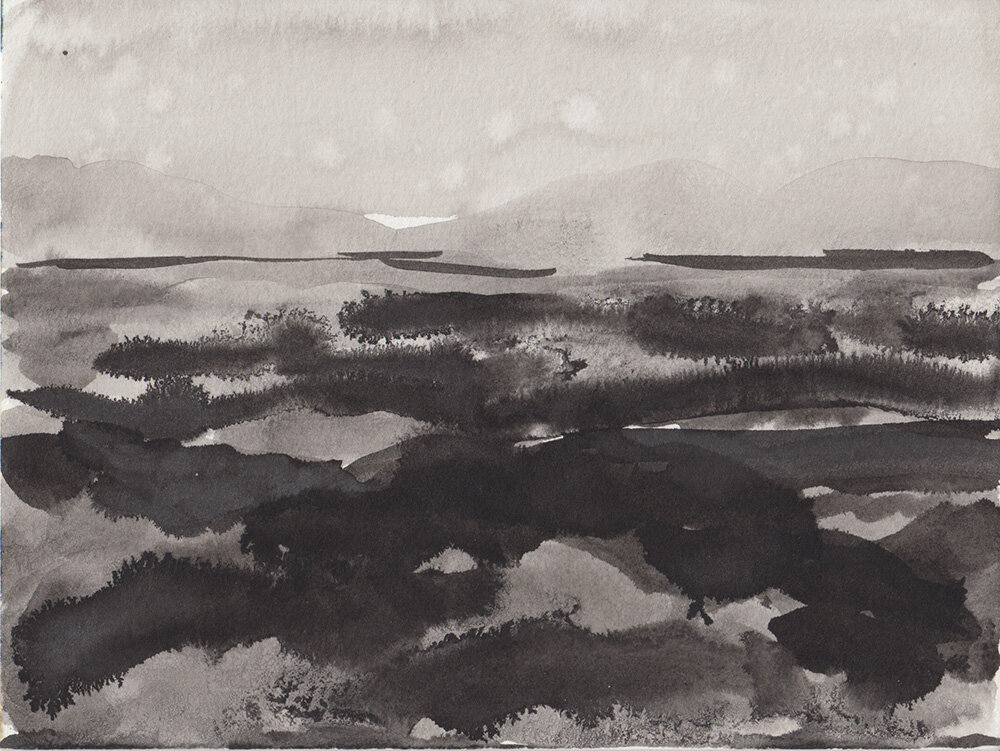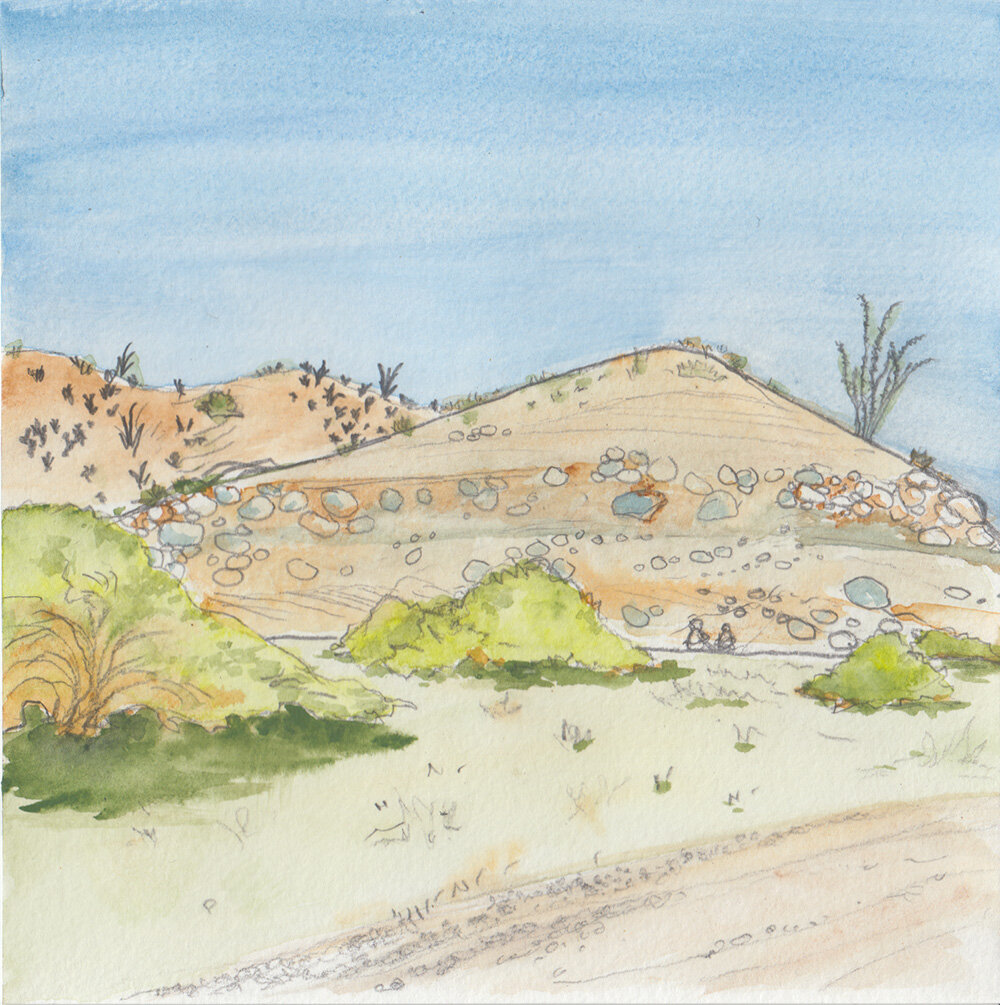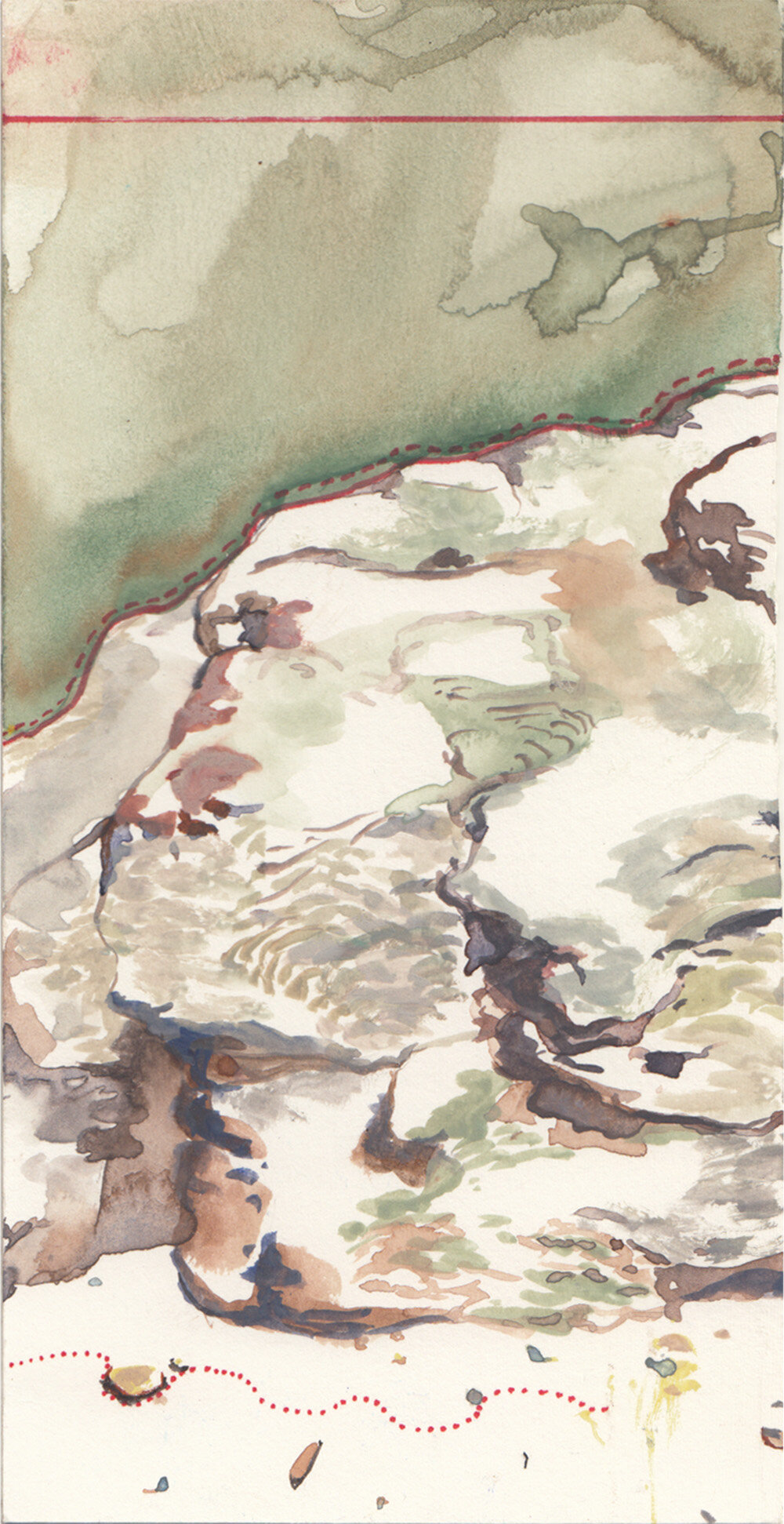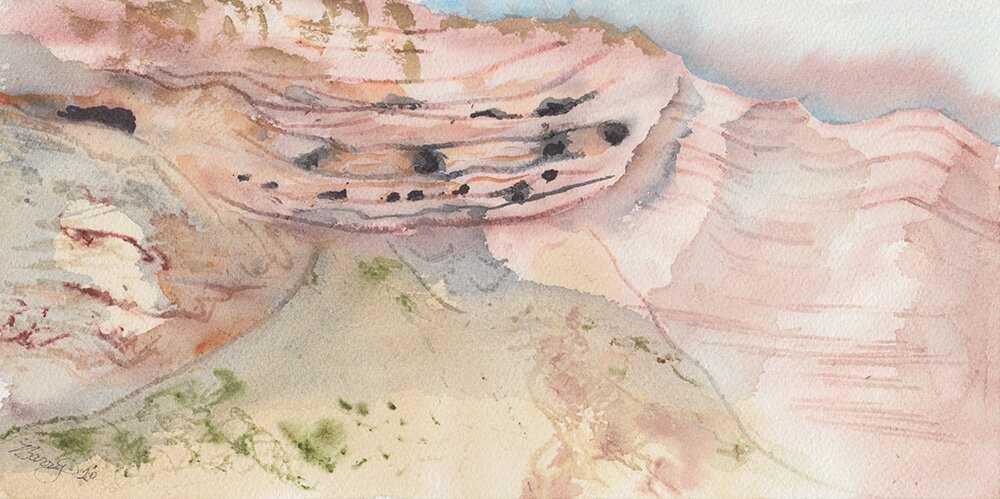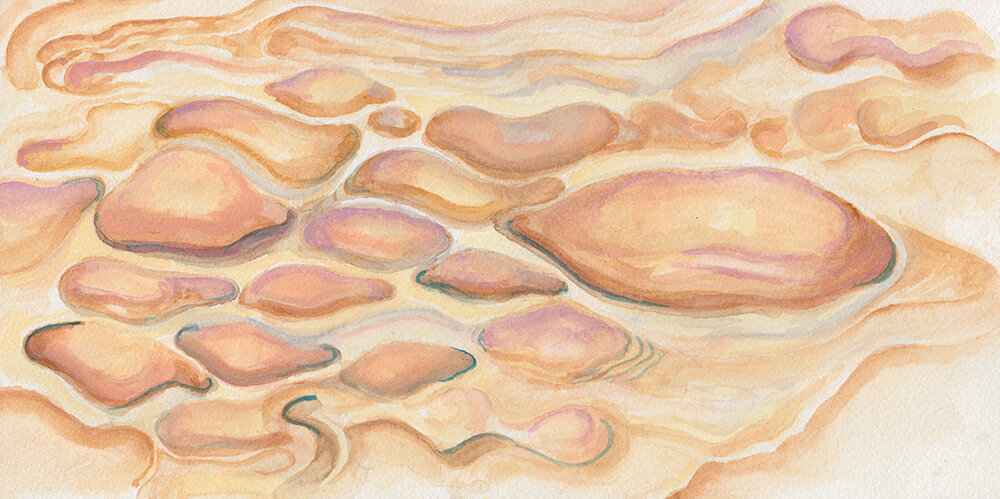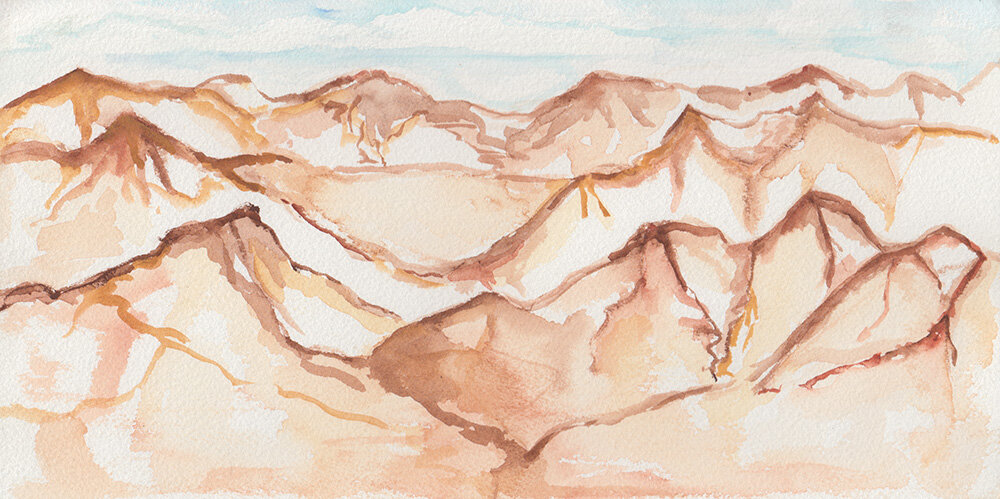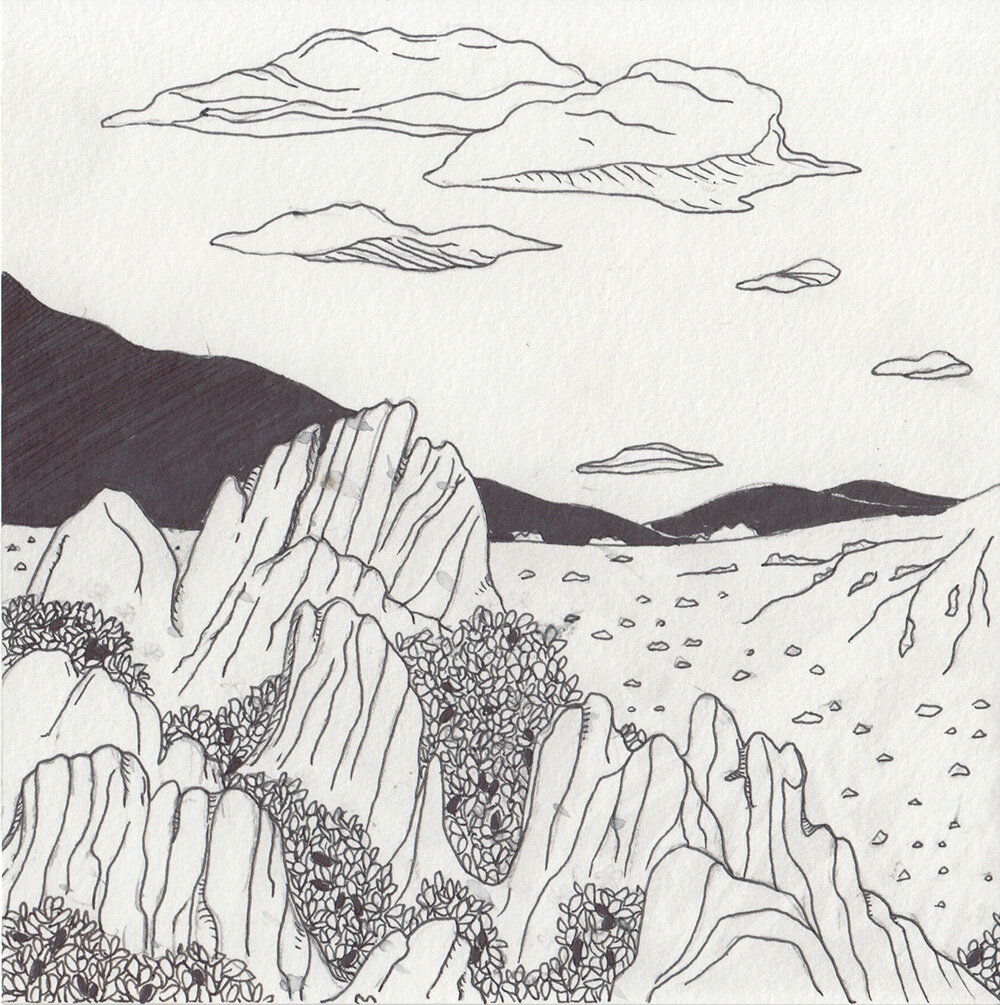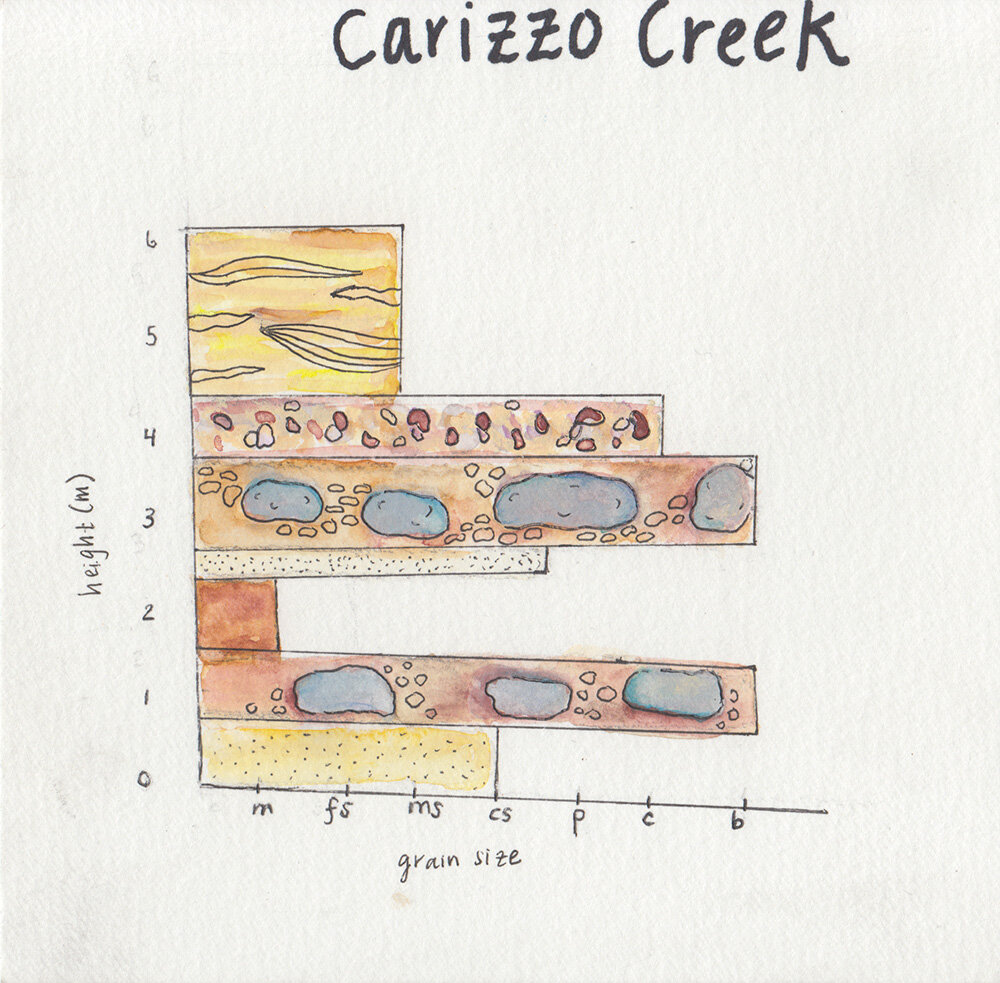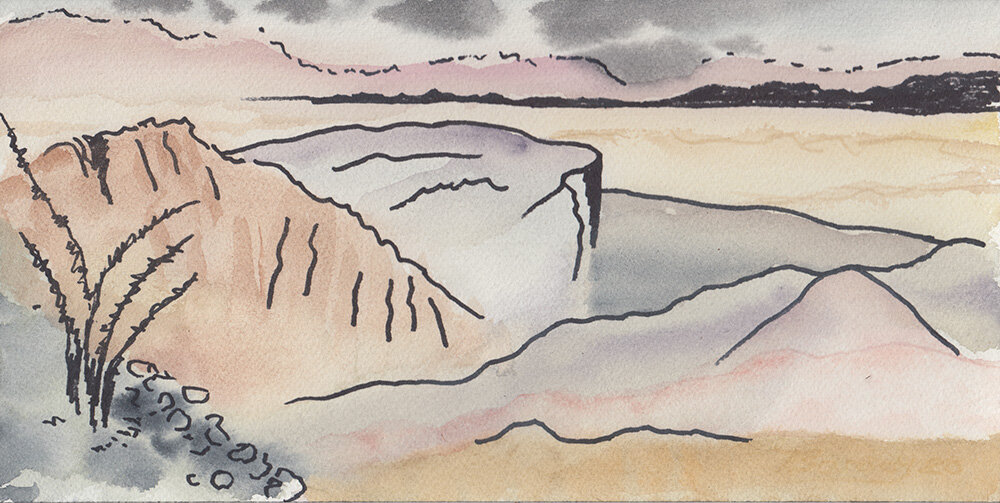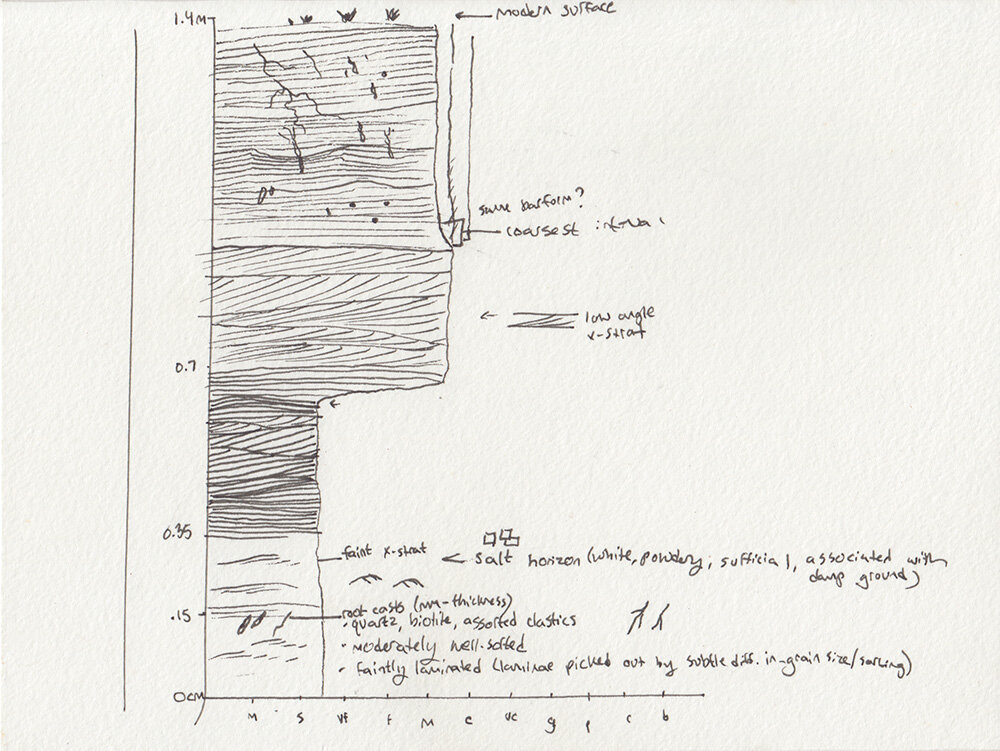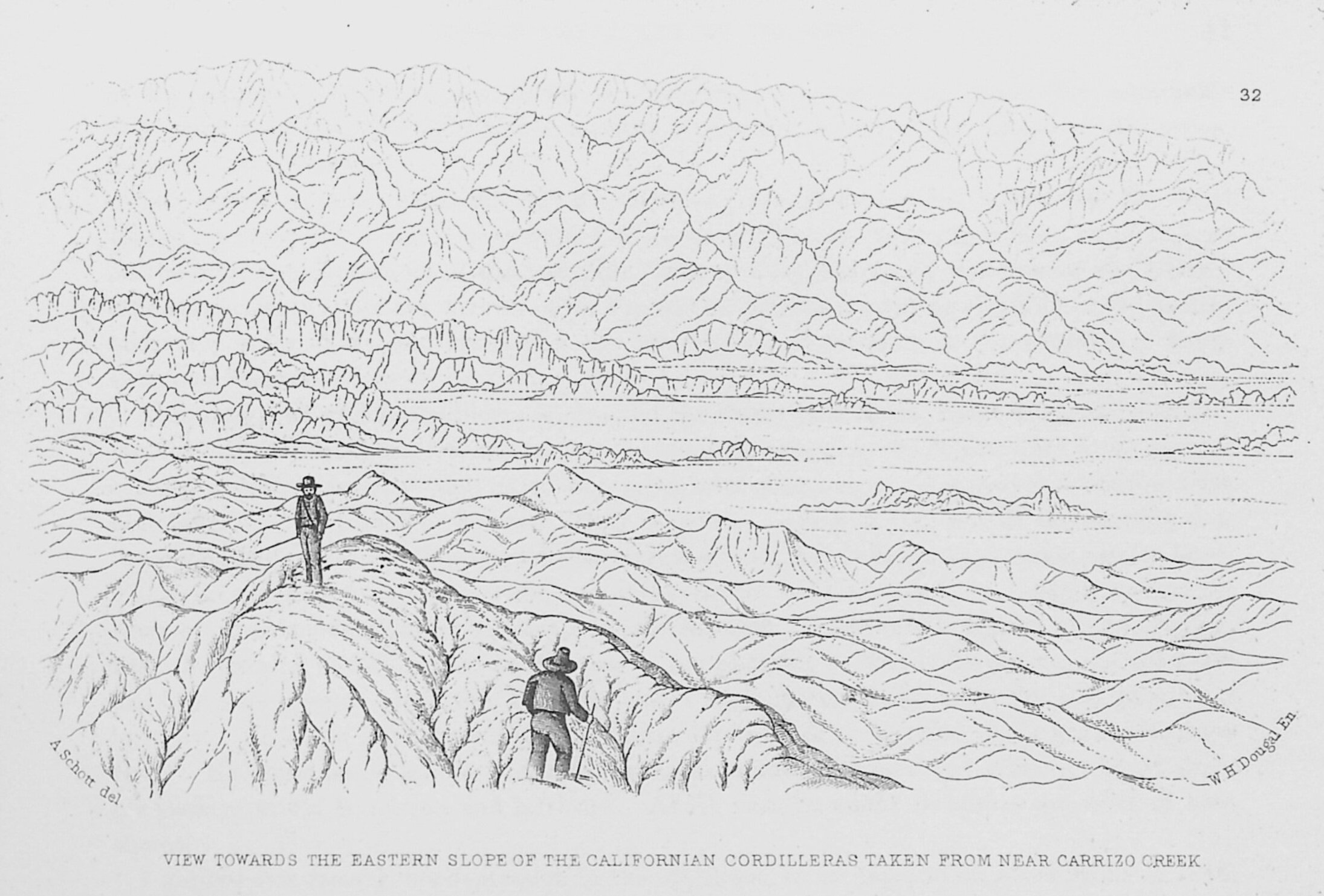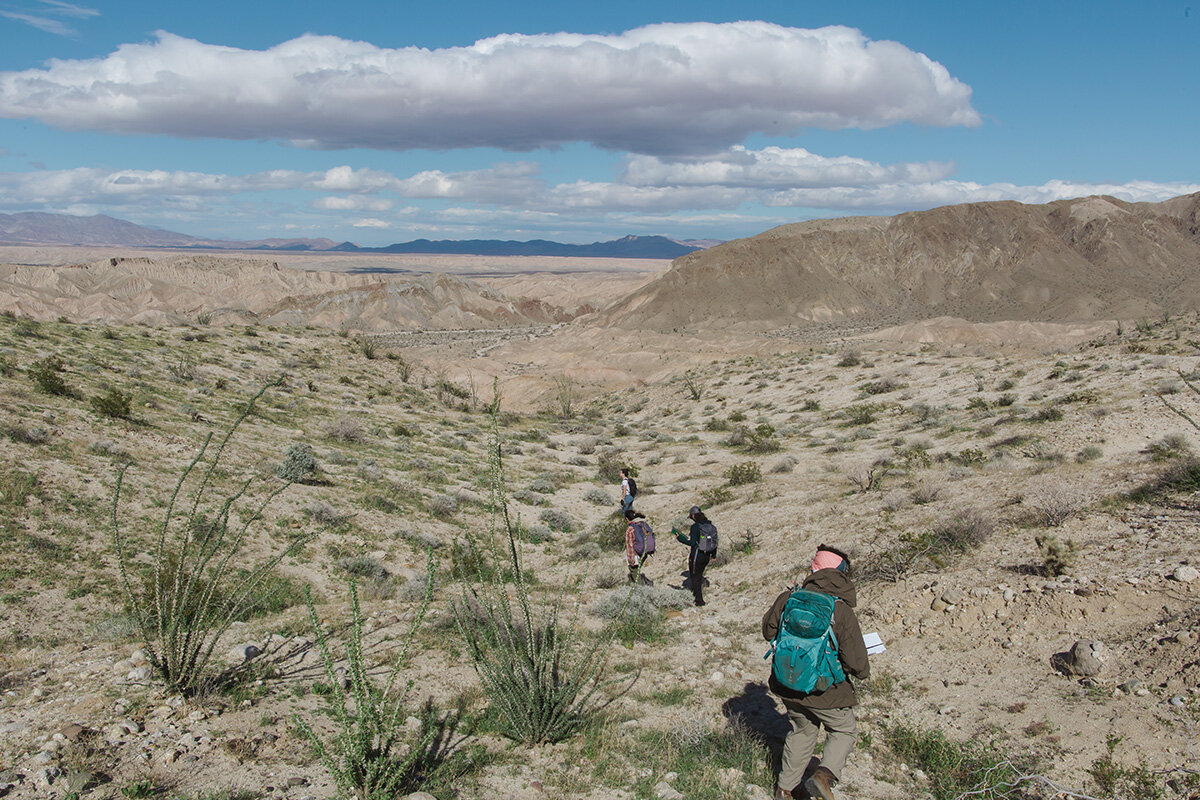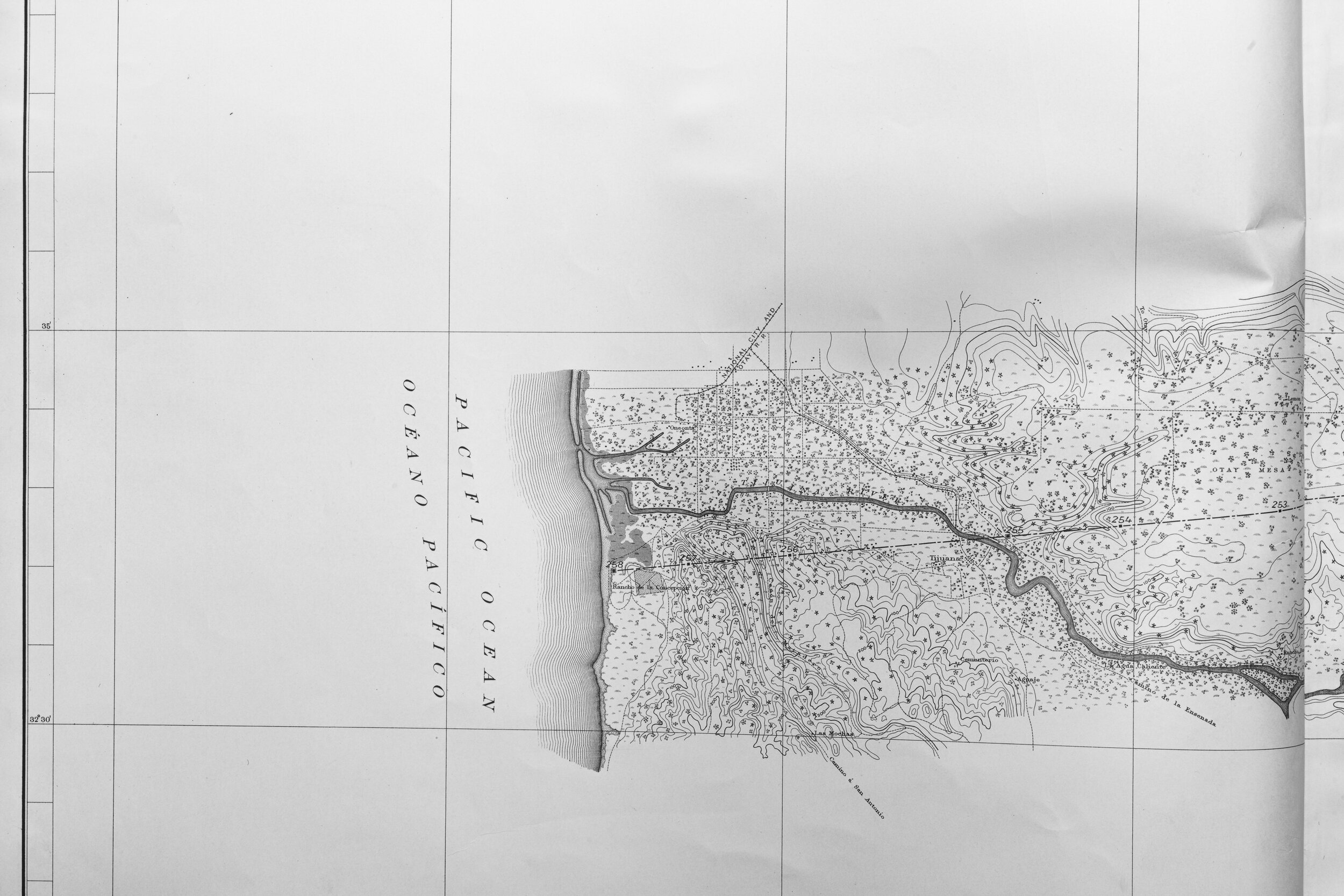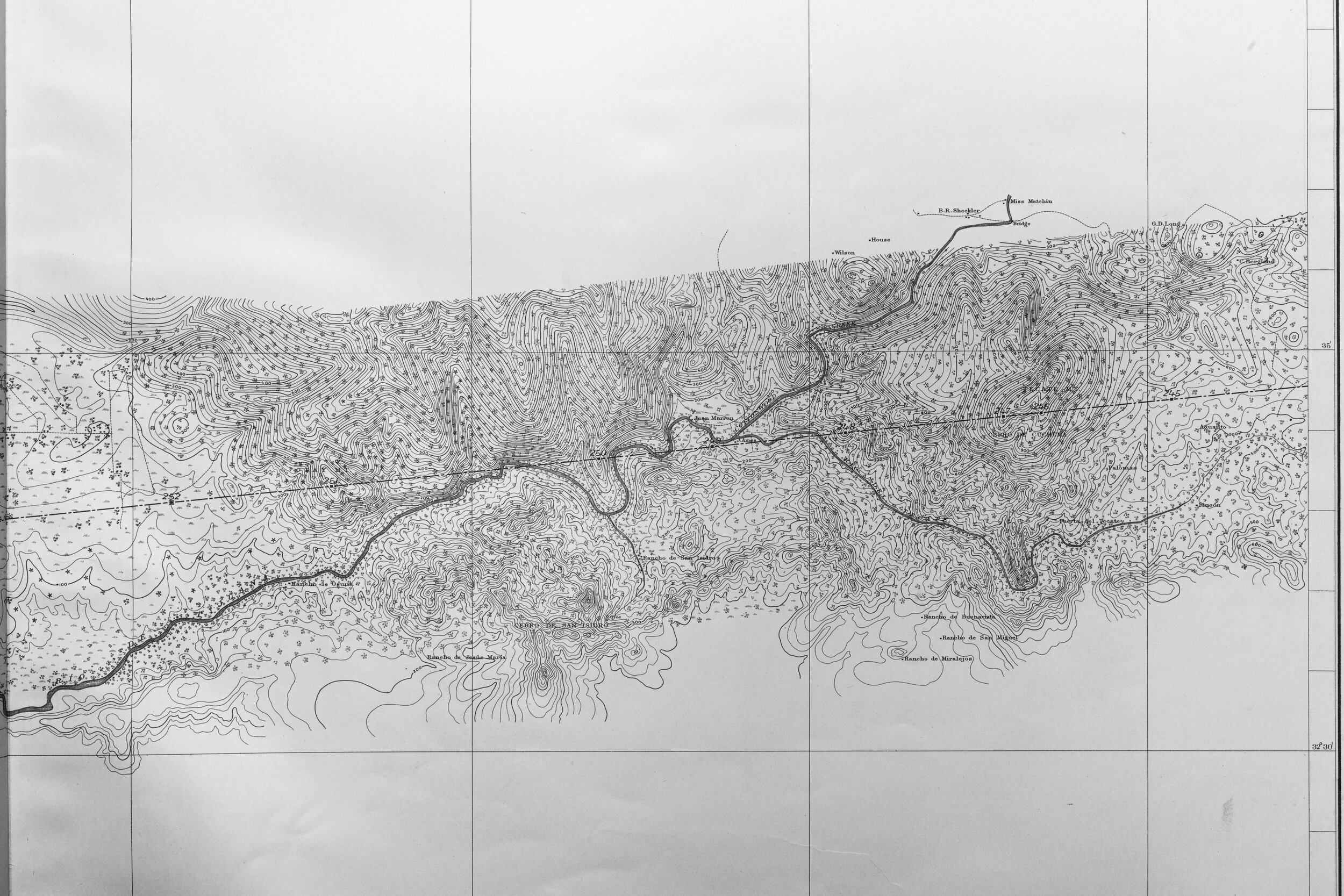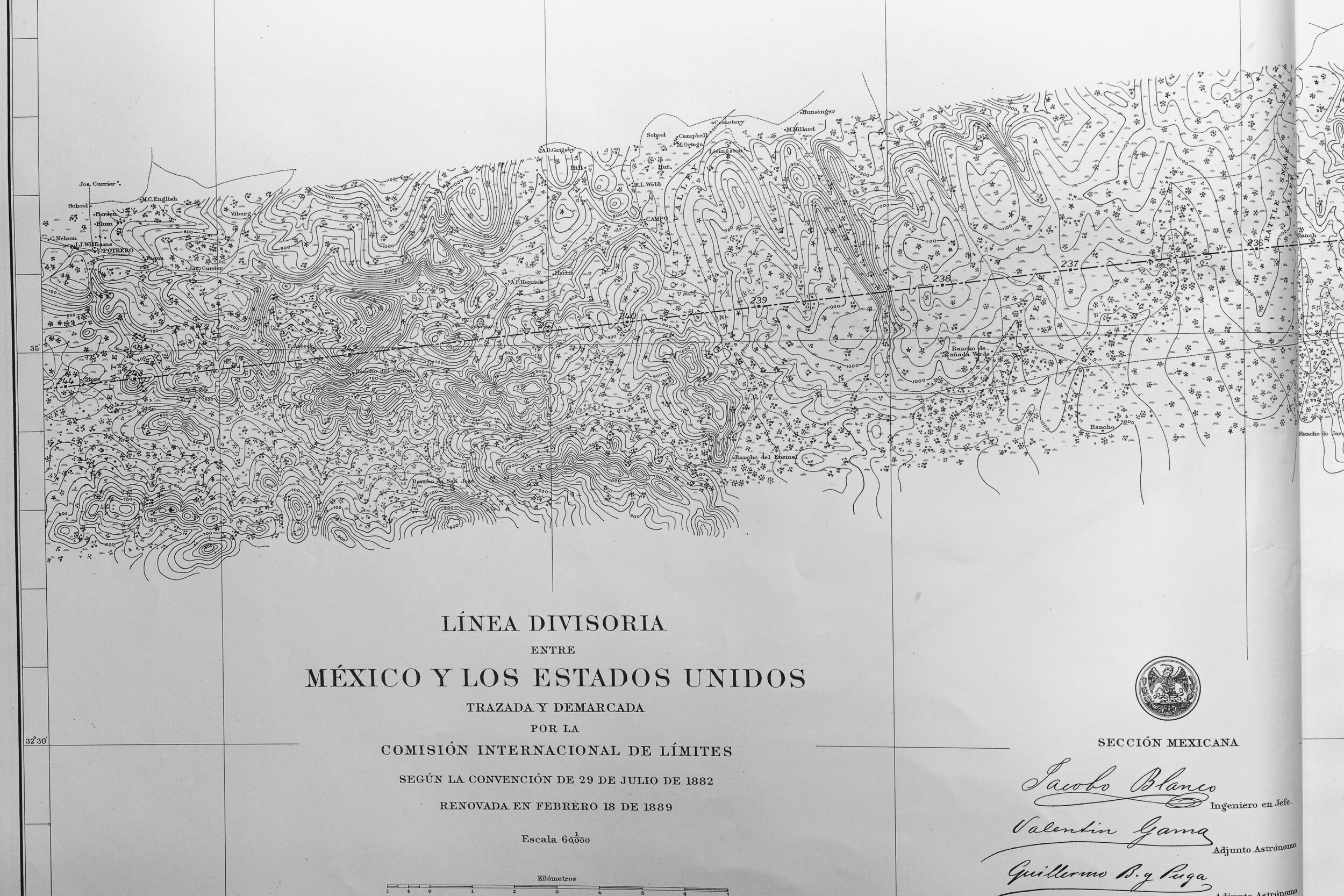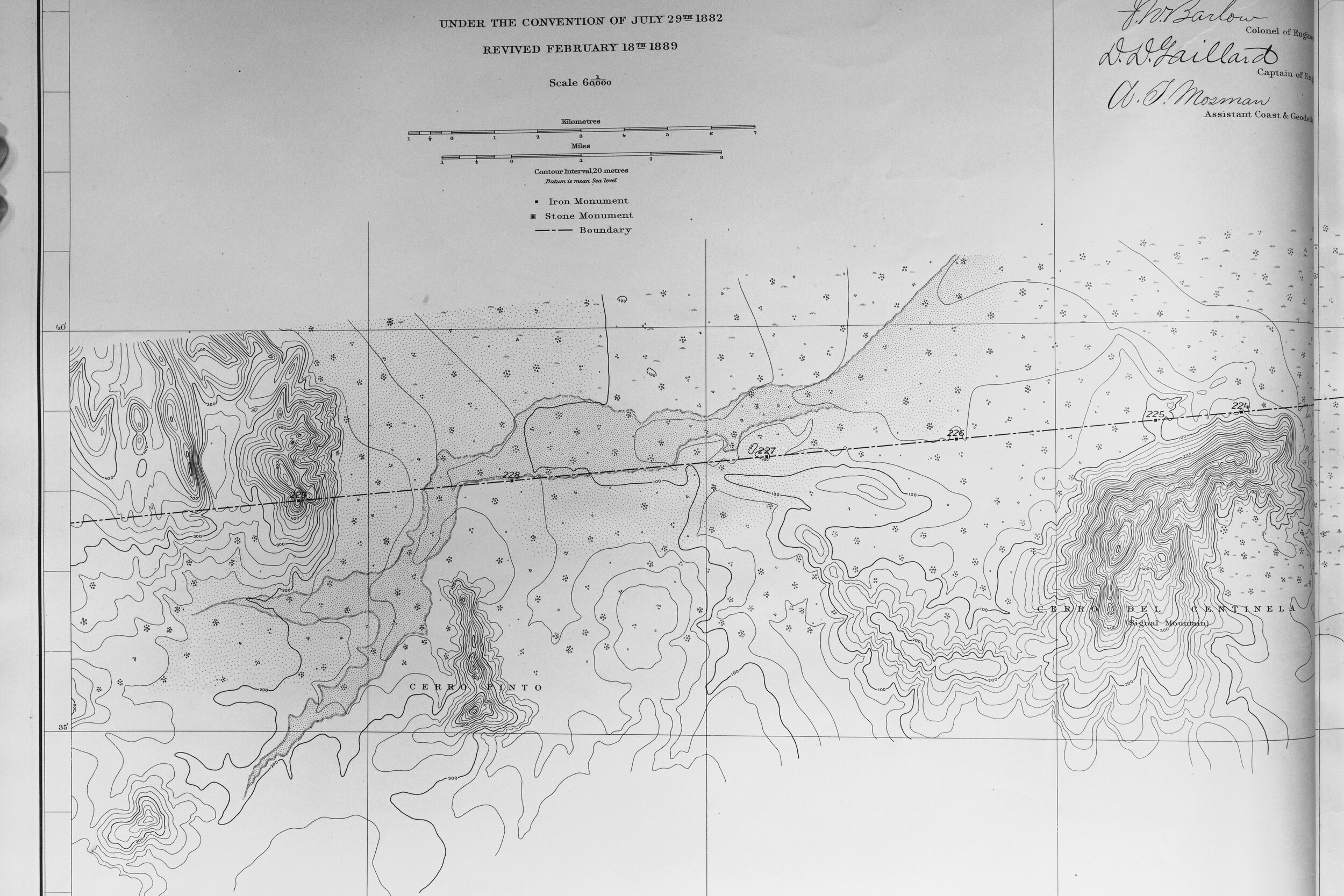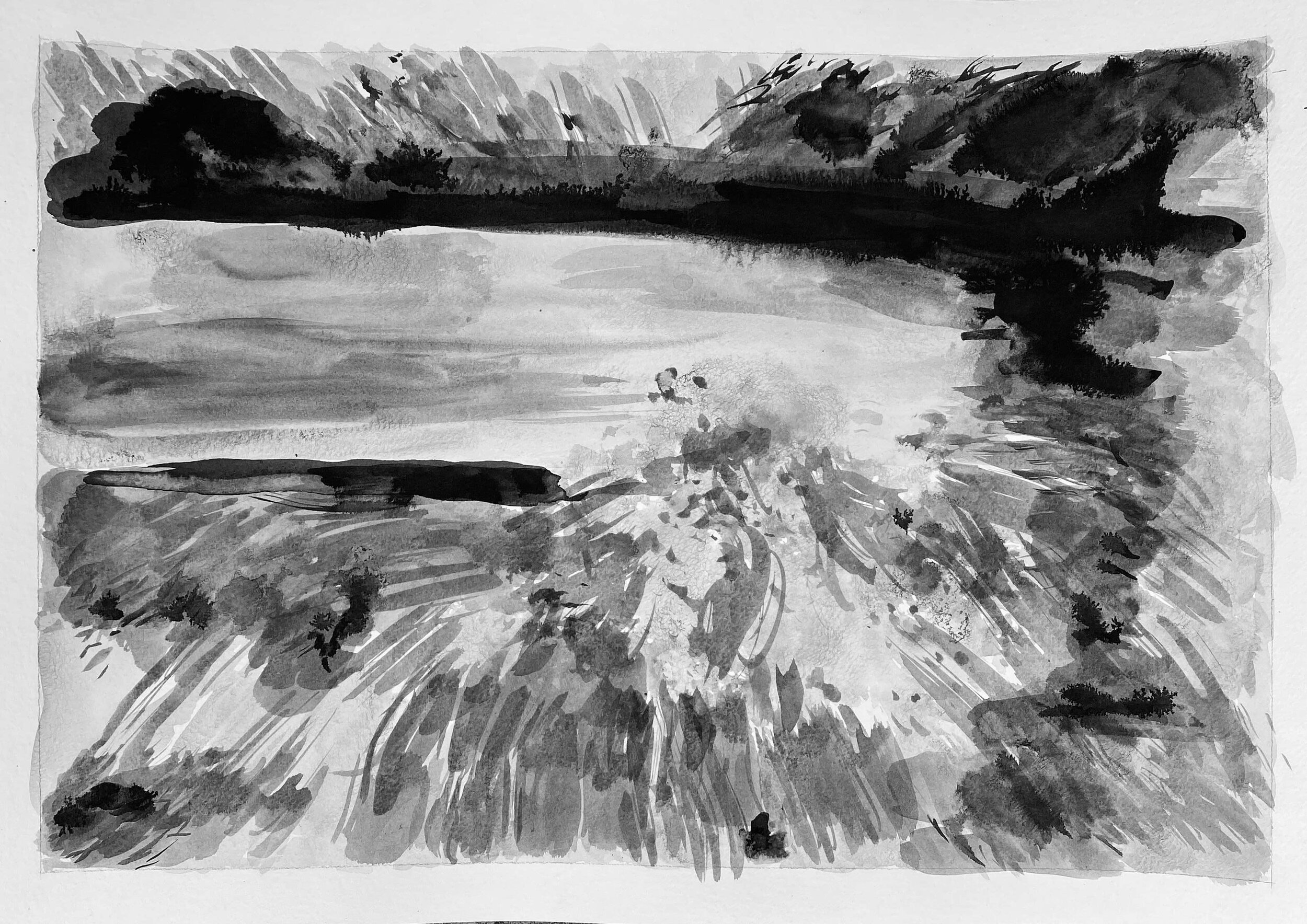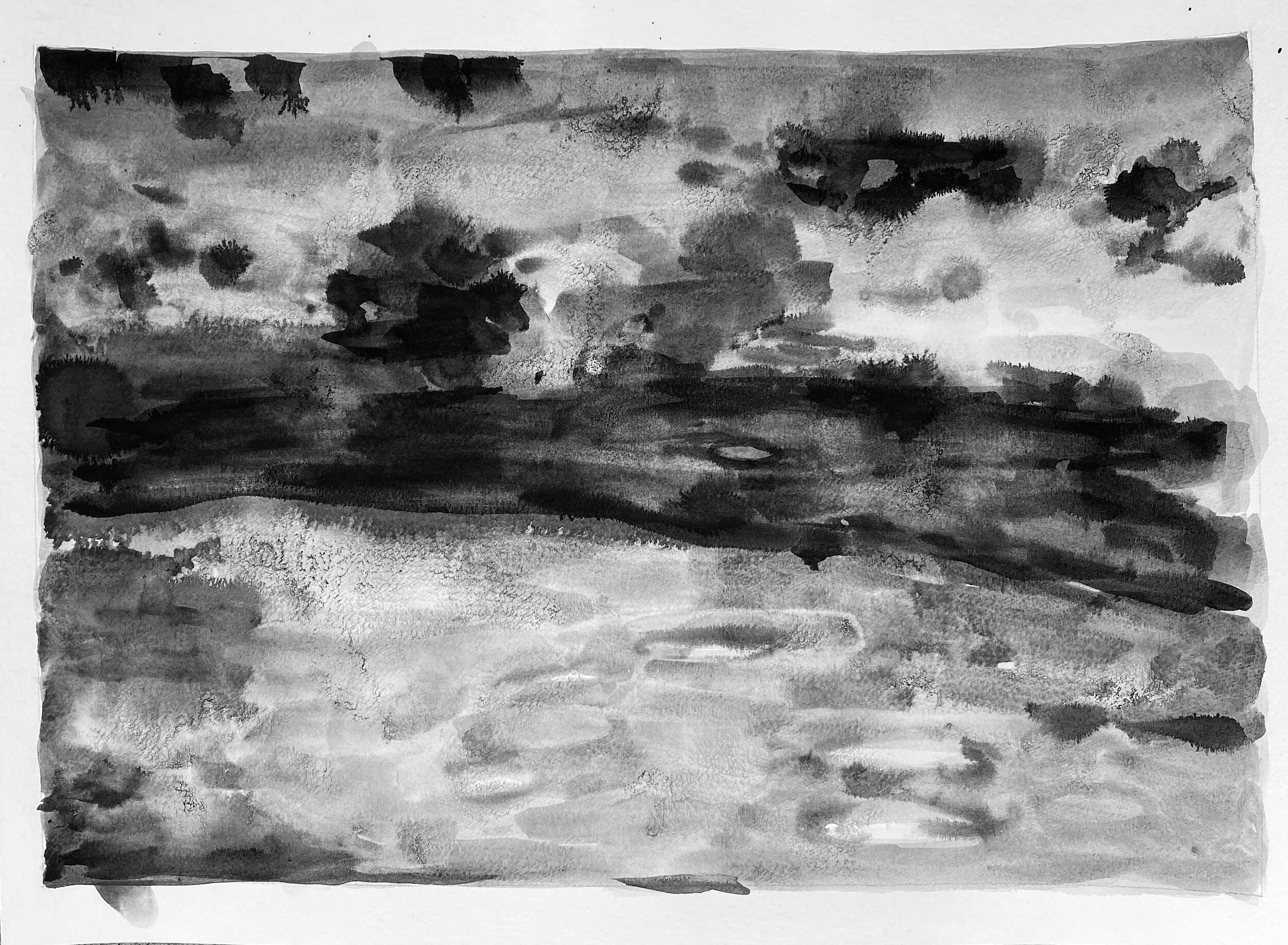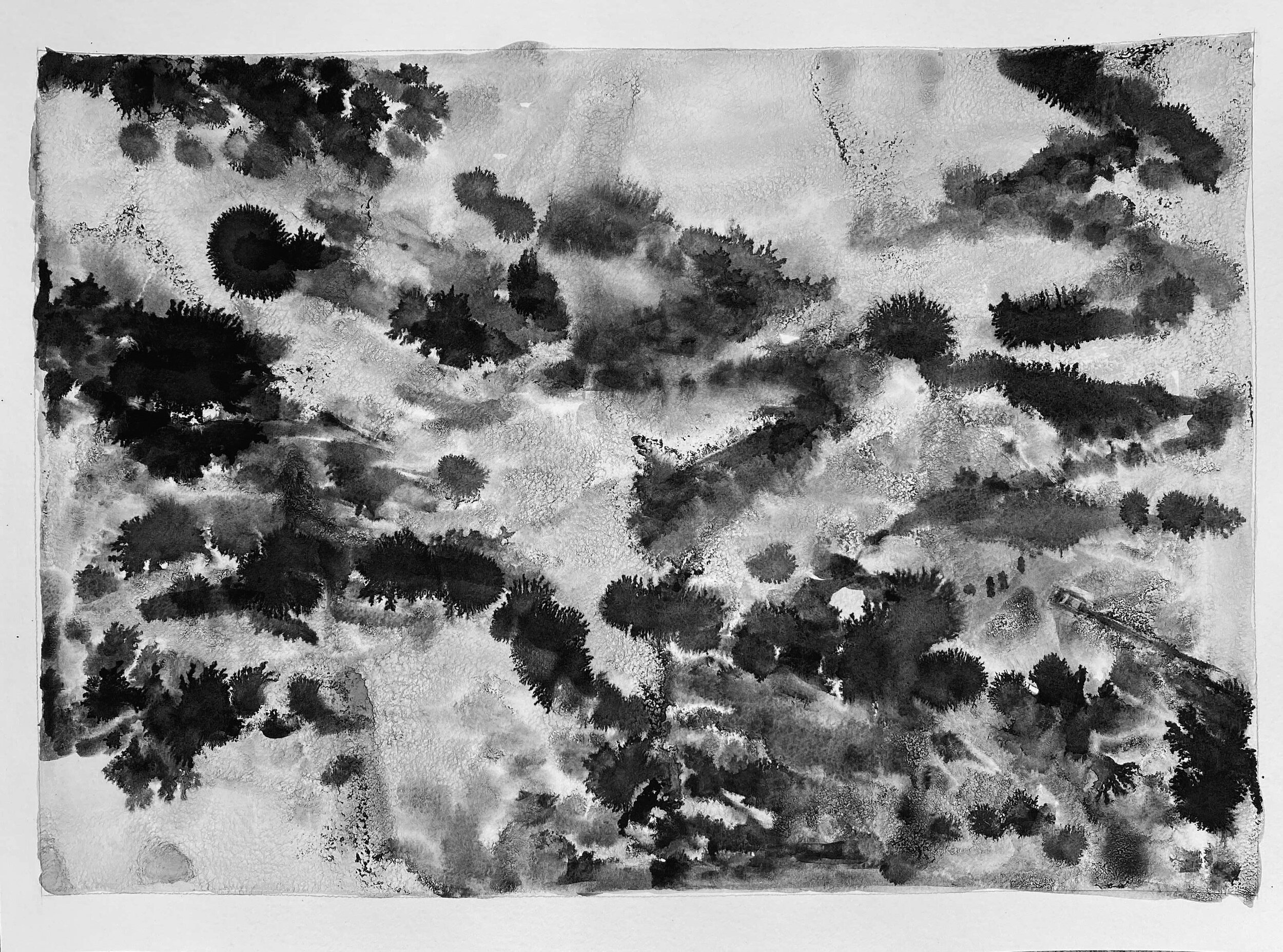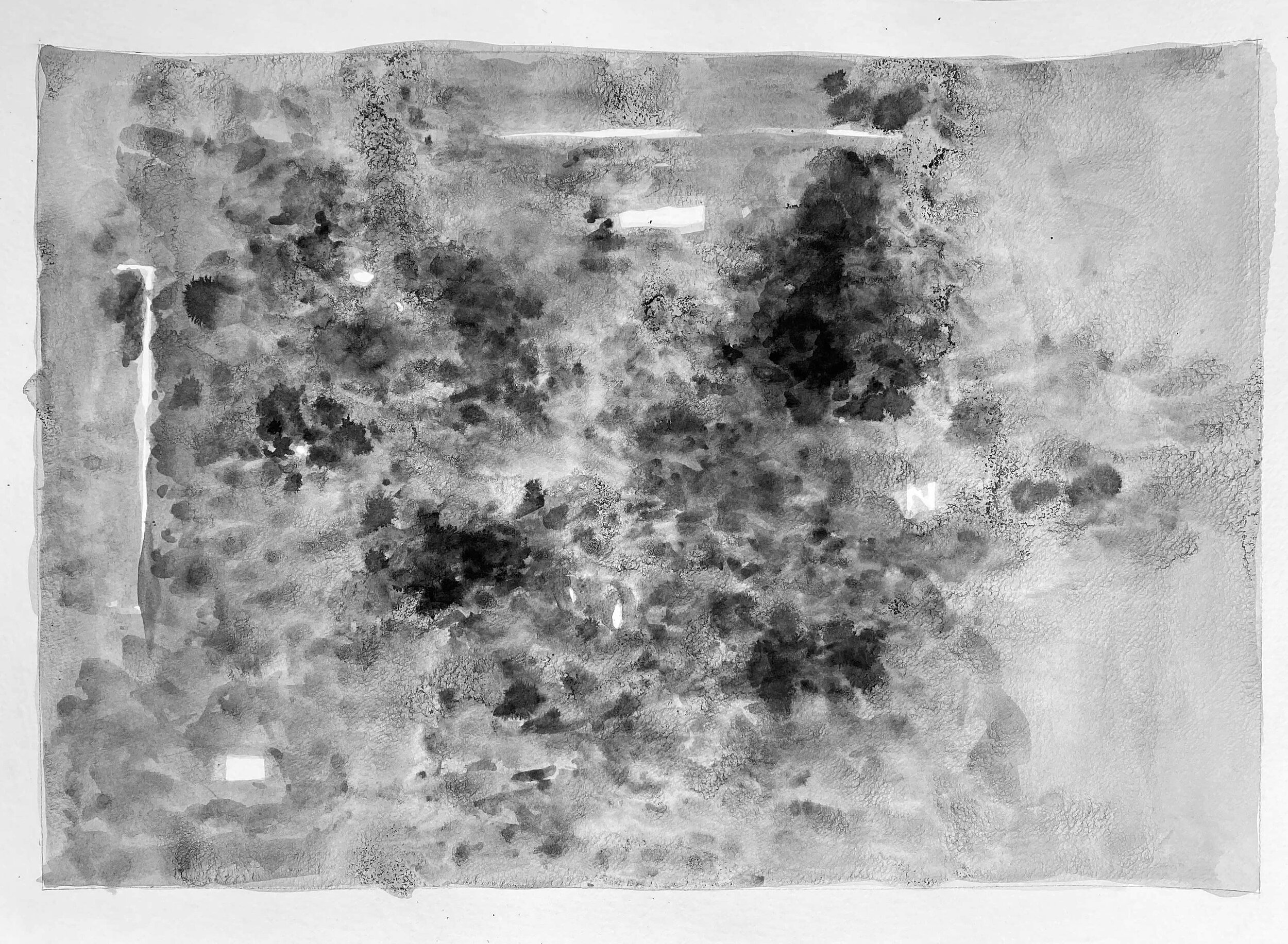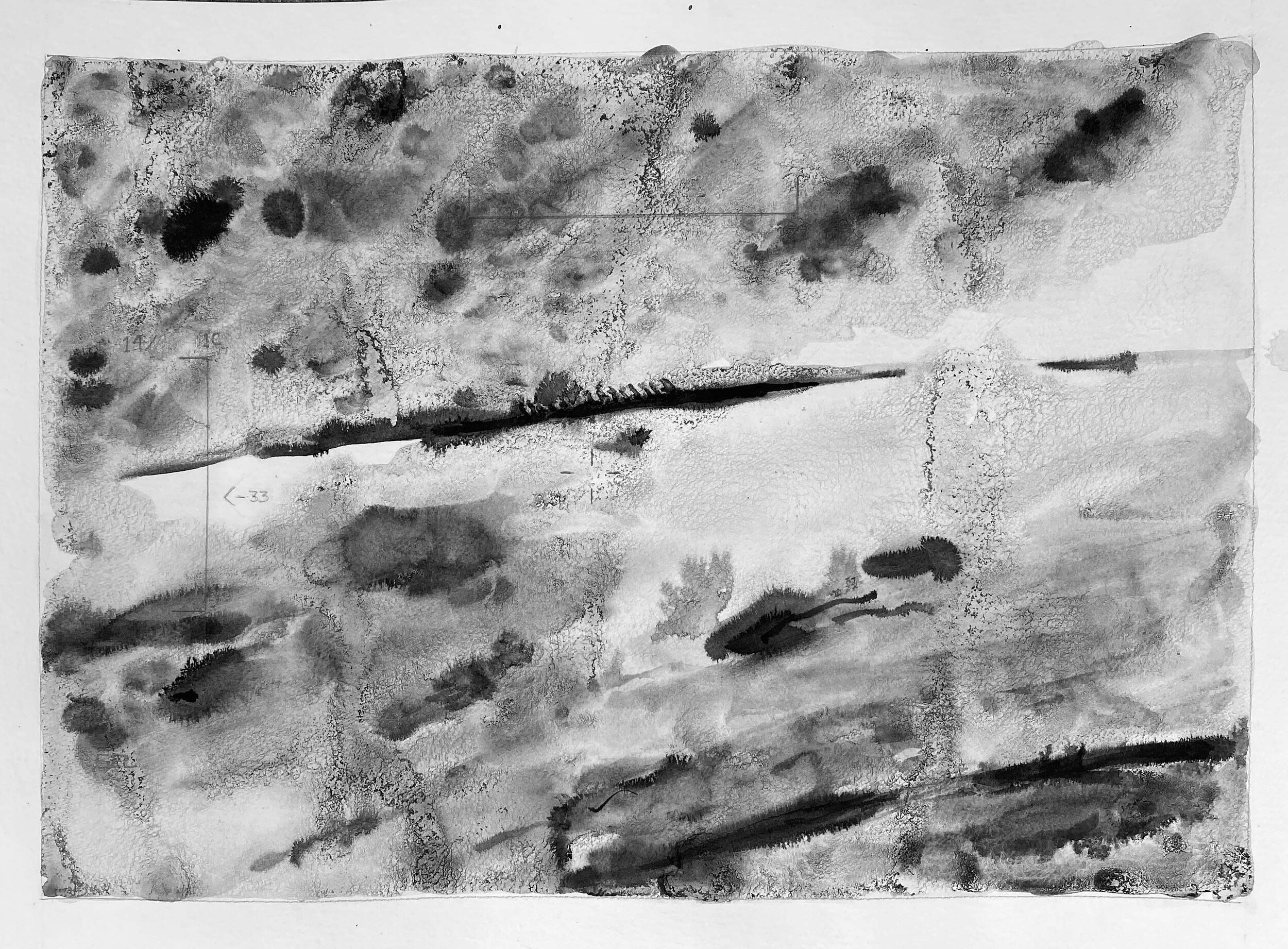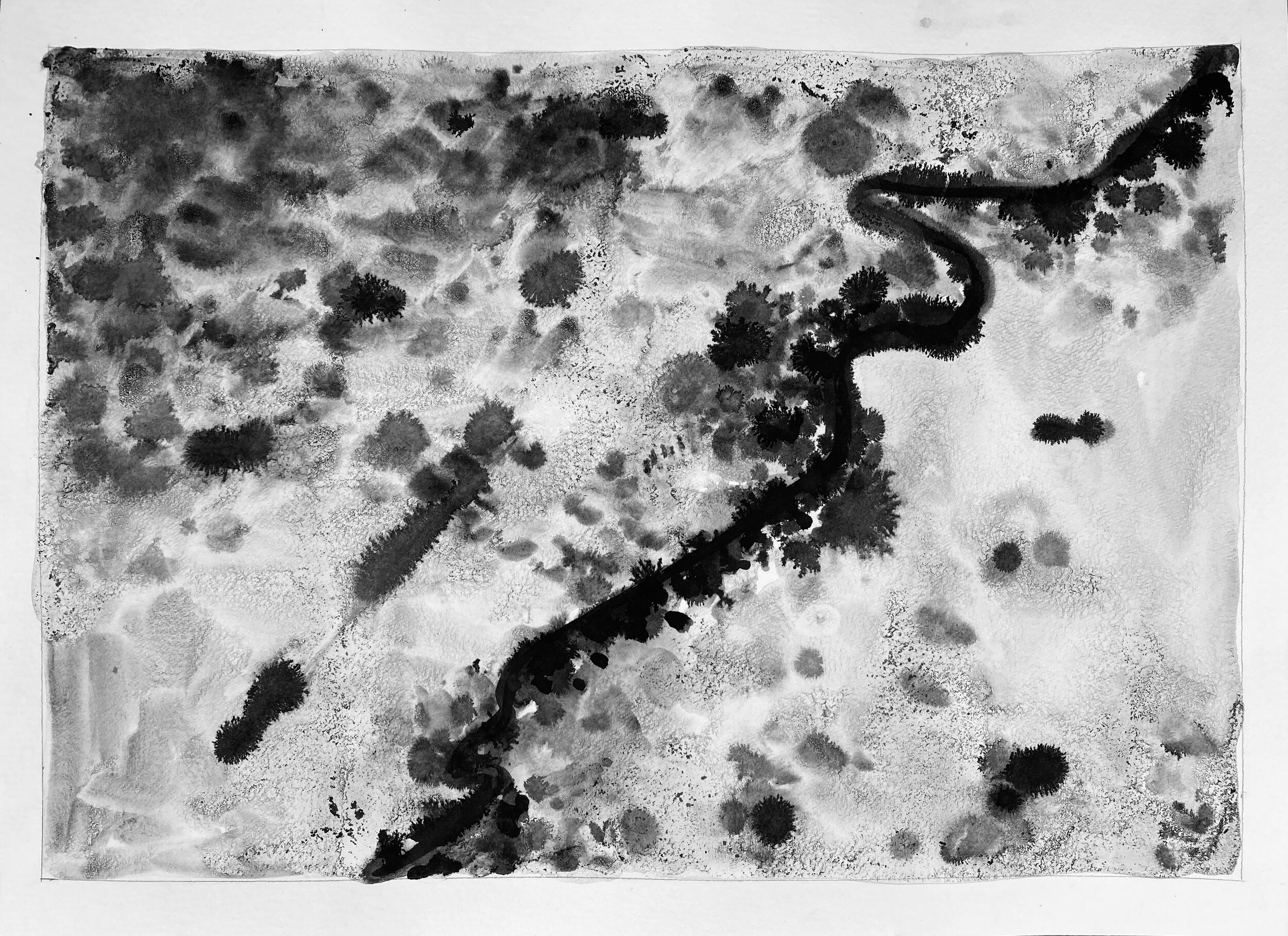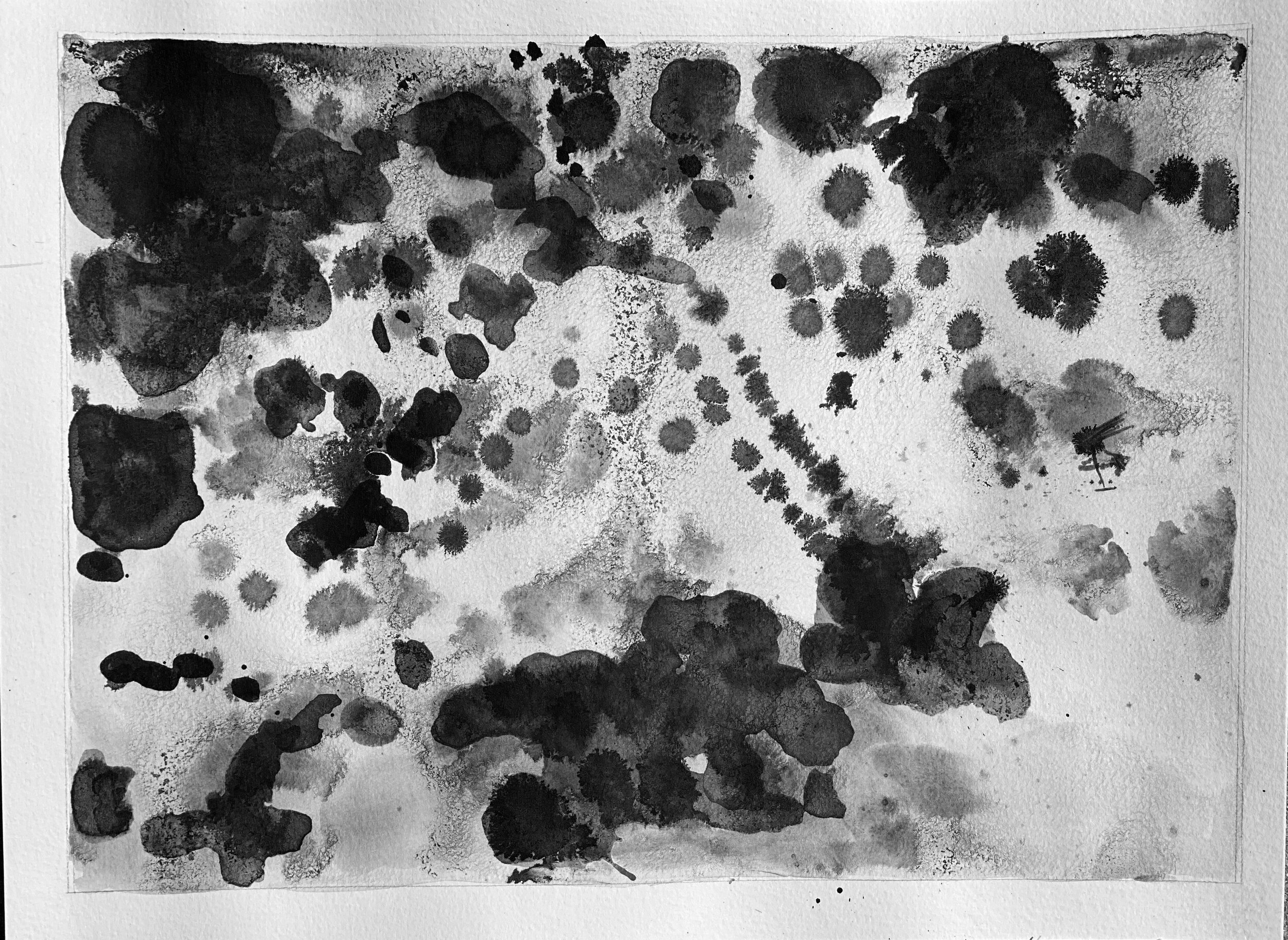Survey to surveillance
Focusing on the US-Mexico boundary, Survey to Surveillance shows a through line between the 19th century scientific land survey the US government used to establish the border and contemporary database systems used to police it today. It includes a collection of ink drawings, photographs, video and texts developed in the studio and on-site in collaboration with artists and scientists. The project explores the concepts of scientific and technological objectivity in the formation and policing of national identity. It contrasts official government efforts to codify, naturalize and mechanize a Eurocentric view of the region with diverse hand-drawings that push back on such boundaries of control.
Further reading
“Survey to Surveillance”, an essay by Hillary Mushkin published in Places Journal
“Hillary Mushkin: Survey to Surveillance”, Voices from Places, Episode 1, Sci-Arc Channel
“Geologists and the Earth: Building a better symbiosis” by Incendiary Traces contributor Sarah Zeichner
Carrizo Creek
In February of 2020, Incendiary Traces brought a group of scientists and artists to California’s Carrizo Creek area, southeast of Anza Borrego Desert State Park, to focus on the geological and botanical illustrations in the US Boundary Commission Survey Report (1857-9). The report and atlas published in 1899 are among most important official government documents establishing the US southern boundary.
Top carousel image credits: Cecilia Sanders (1, 2, 12, 18, 22) Jena Lee (3, 7), Hillary Mushkin (4, 8, 11, 15, 23), Nikko Mueller (5, 13, 20), Sarah Zeichner (6, 16, 17, 19, 20), Usha Lingappa (9, 10), Jim Barry (14, 21).
Image 1: Illustration by Arthur Schott, engraved by W.H. Dougal (1856), from Report on the United States and Mexico Boundary Survey, vol. 1, 1857
Image 2: Incendiary Traces group descends from Carrizo Badlands Overlook | Photo: Gina Clyne
Cecilia Sanders sketches at Carrizo Creek | Photo: Gina Clyne
Sarah Zeichner sketches at Carrizo Badlands Overlook | Photo: Gina Clyne
The boundary Atlas
The International Boundary Commission Boundary between the United States and Mexico (1899) details the borderline topography, including the positions of border monuments placed by the survey team to permanently mark the line. Photographic blueprints of these original documents (below) show their continued resonance today.
Topographical illustrations from the Boundary between the United States and Mexico: as surveyed by the International Boundary Commission under the Convention of July 29th, 1882; published 1899. | Photographic blueprints: Hillary Mushkin
The Palantir Drawings
The US Boundary Commission Survey Report defines the national boundary in a no-tech database of scientific illustrations and new classifications of the natural world. Databases are the backbone of boundary policing today. The photographic blueprints of the original boundary report (below) show a vision of scientific and technological control over land and inhabitants. They are juxtaposed with abstract ink drawings based on Palantir database analysis software, which ICE uses to track and deport people. These two sets of images together suggest the limits of control.
The US Boundary Commission survey team named plant species after themselves in new Latin names, including “Emoryi” and “Schottii” after survey leader William H. Emory and illustrator Arthur Schott. | Photographic blueprints: Hillary Mushkin
India ink is made of soot. It can dissolve with enough water into burnt particles. When you draw a line with India ink in water, you can see the line dissolve before your eyes.
All ink and graphite drawings on paper | Hillary Mushkin
Drone Views
The US government project to survey and classify the inhabitants of the national landscape is now mechanized, electronic and digital. This collection of drawings and drone video footage consider the boundaries of technological and human control.
Drone footage of Carrizo Creek area shot by Incendiary Traces team with equipment usually used for contemporary scientific geological surveys.
India ink drawings based upon 2012 US Customs and Border Patrol drone footage of the southwestern desert | Hillary Mushkin
A Special Thanks to the following artists and scientists who contributed to Survey to Surveillance: Jim Barry, Gina Clyne, Usha Lingappa, Nikko Mueller, Cecilia Sanders and Sarah Zeichner
Jim Barry, Cecilia Sanders, Sarah Zeichner, Usha Lingappa, Hillary Mushkin and Jena Lee on site at Carrizo Creek | Photo: Gina Clyne

